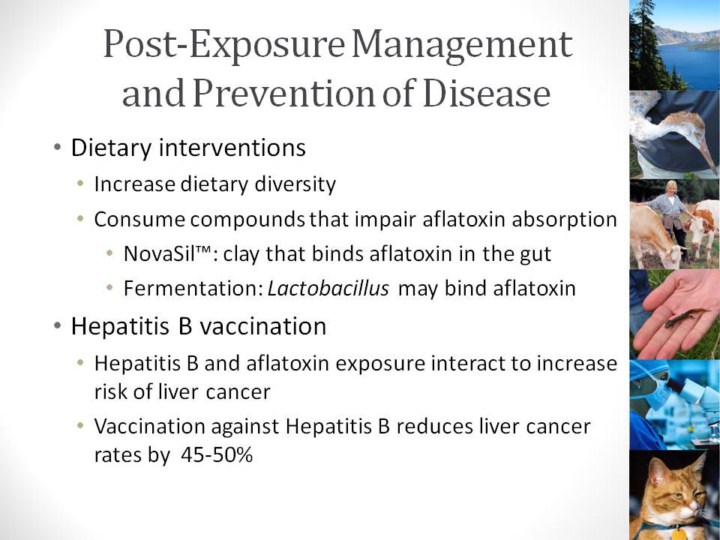| front |1 |2 |3 |4 |5 |6 |7 |8 |9 |10 |11 |12 |13 |14 |15 |16 |17 |18 |19 |20 |21 |22 |23 |24 |25 |26 |27 |28 |29 |30 |31 |review |
 |
Although it is preferable to avoid aflatoxin consumption all together, there are various ways to minimize the risk of negative health effects for those whose diets contain foods likely to be contaminated with aflatoxins. Certain compounds reduce absorption of aflatoxins when they are consumed simultaneously. One promising intervention is the use of NovaSil™ clay (sodium calcium aluminosilicate), which adsorbs aflatoxin in the intestine and prevents its uptake. It has been effective in animal models and has been shown to be safe in phase I and II clinical trials in humans.3, 33 However, while initial results are promising, further research is needed to ensure it is not also binding to and preventing absorption of important nutrients.34, 35
Hepatitis B vaccination does not affect aflatoxin exposure itself, but it can dramatically lower liver cancer rates in endemic areas.32
Finally, increased dietary diversity in areas where aflatoxin-prone foods such as corn and groundnuts are staples can improve outcomes. Research is ongoing to discover which particular substances protect against aflatoxin toxicity. Other proposed methods of aflatoxin mitigation include thermal inactivation , irradiation , microbial inactivation and fermentation. Fermentation may reduce aflatoxin absorption because Lactobacillus binds to aflatoxin B1.32 |